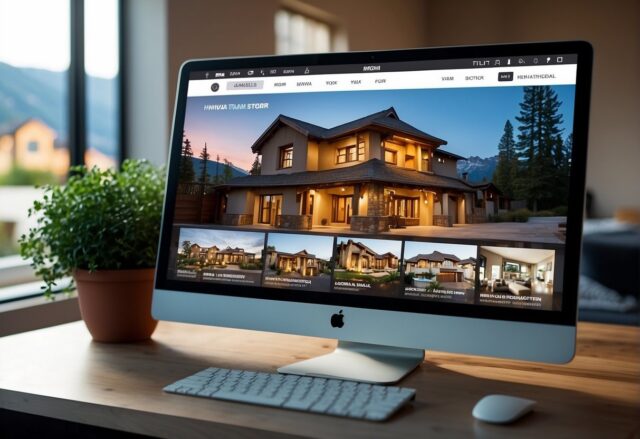In an era where online shopping is increasingly becoming the norm, businesses must find innovative ways to engage customers and showcase their offerings. One effective method is through virtual tours. A virtual tour provides an immersive experience, allowing potential customers to explore your shop’s layout and products from the comfort of their homes. Here’s how to use virtual tours effectively to showcase your shop layout online.

Table of Contents
Toggle1. Choose the Right Technology
Selecting the right technology is crucial for creating a high-quality virtual tour. Various platforms and tools can help you create an engaging experience. Some popular options include:
- 360-degree cameras: These capture panoramic views of your shop, providing a comprehensive visual experience.
- Virtual tour software: Platforms like Matterport, Kuula, and Roundme allow you to create interactive tours with ease.
- Augmented reality (AR): For a more advanced option, AR can overlay digital information on real-world views, enhancing customer interaction.
Tips:
- Test different tools to find the one that best fits your needs and budget.
- Ensure the chosen technology is compatible with various devices, including smartphones and tablets.
2. Plan Your Tour Layout
Before shooting your virtual tour, plan the layout carefully. Identify the key areas of your shop you want to showcase, such as:
- Product displays
- Checkout areas
- Customer service stations
- Unique architectural features or decor
Highlighting these elements will give viewers a comprehensive understanding of your shop’s layout and ambiance.
Tips:
- Create a storyboard to visualize the flow of the tour.
- Consider including hotspots for interactive features, such as product details or videos.
3. Capture High-Quality Visuals
When creating your virtual tour, high-quality visuals are essential. Ensure that your shop is well-lit, clean, and organized before shooting. Here are some tips for capturing stunning visuals:
- Lighting: Use natural light whenever possible, or invest in softbox lights to enhance indoor illumination.
- Staging: Arrange products attractively and ensure pathways are clear for a welcoming feel.
- Angles: Capture shots from multiple angles to provide a comprehensive view of each area.
Tips:
- Take test shots to adjust lighting and angles before the final shoot.
- Aim for a resolution that will look good on both desktop and mobile devices.
4. Add Interactive Elements
One of the advantages of virtual tours is the ability to incorporate interactive elements. Consider adding features that enhance the user experience, such as:
- Clickable hotspots: These can provide additional information about products or services when clicked.
- Video snippets: Embed short videos featuring staff introductions, product demonstrations, or customer testimonials.
- Audio narration: Adding voiceovers can guide visitors through the tour, providing context and personality.
Tips:
- Keep interactive elements relevant and engaging without overwhelming the viewer.
- Use clear icons or markers to indicate interactive features.
5. Optimize for SEO
To ensure your virtual tour reaches your target audience, optimize it for search engines. Use relevant keywords in your tour’s title, descriptions, and meta tags. This will help improve visibility and attract more visitors to your website.
Tips:
- Include localized keywords to attract customers in your area.
- Share the virtual tour on your social media channels with appropriate hashtags.
6. Promote Your Virtual Tour
Once your virtual tour is live, promote it across various channels to maximize exposure. Consider the following strategies:
- Website integration: Feature the virtual tour prominently on your homepage or dedicated landing page.
- Email marketing: Send newsletters to your subscriber list, highlighting the new virtual tour and encouraging them to explore.
- Social media: Share snippets or teasers on platforms like Instagram and Facebook, inviting followers to take the full tour.
Tips:
- Use eye-catching visuals and compelling language in your promotional content.
- Encourage customers to share the virtual tour with friends and family.
7. Gather Feedback and Improve
After launching your virtual tour, gather feedback from users to understand their experience. Consider implementing surveys or using analytics tools to track engagement and user behavior. This information can help you identify areas for improvement and enhance future virtual tours.
Tips:
- Analyze data such as view duration and interaction rates to gauge effectiveness.
- Use feedback to make necessary adjustments, whether that’s improving visuals or adding new features.
Conclusion
Using virtual tours to showcase your shop layout online is a powerful way to engage customers and enhance their shopping experience. By selecting the right technology, capturing high-quality visuals, and incorporating interactive elements, you can create an immersive experience that encourages visitors to explore your offerings. Promote your virtual tour effectively and continuously seek feedback to refine the experience. Start leveraging this innovative tool today, and watch as it transforms the way customers connect with your shop!


No responses yet